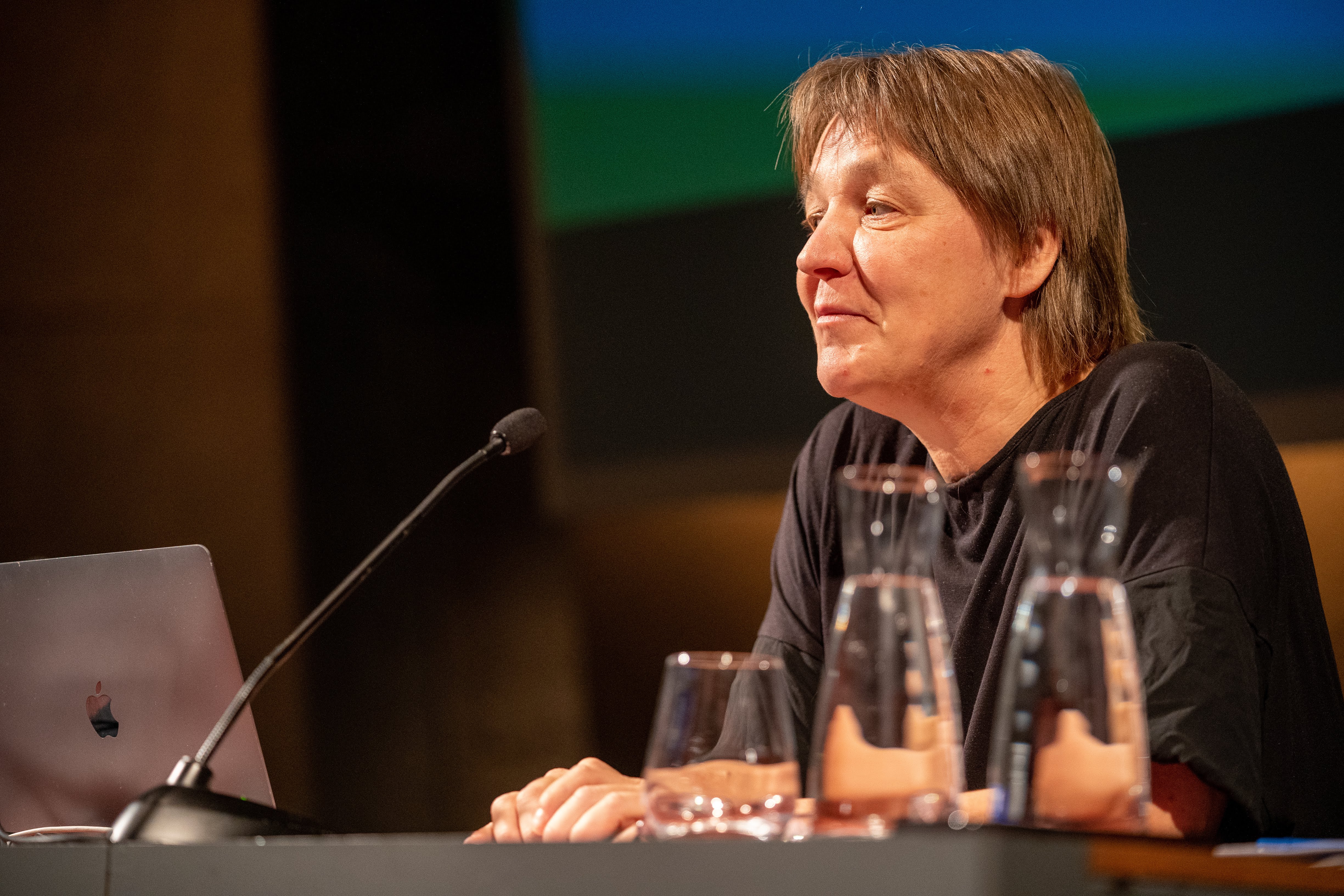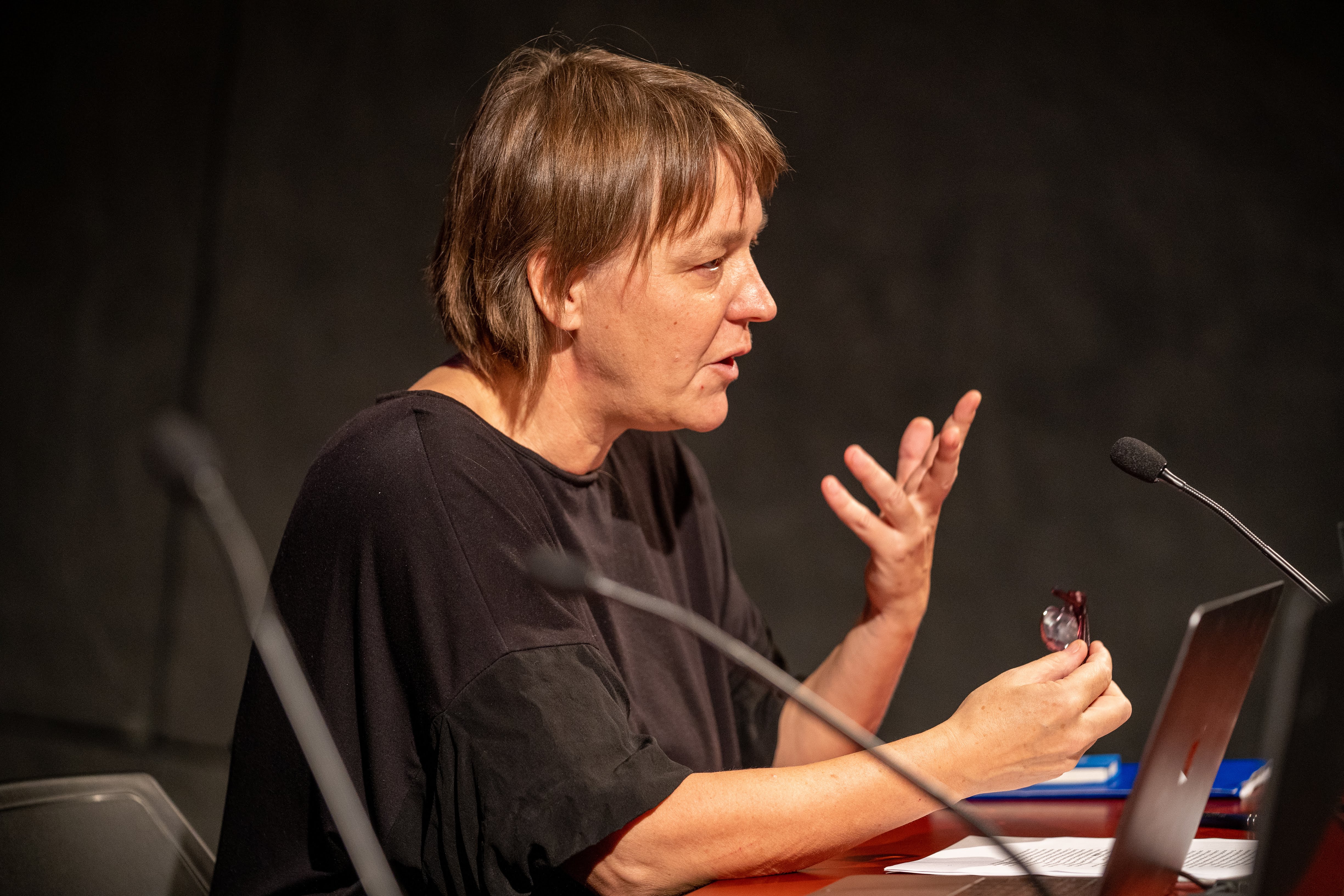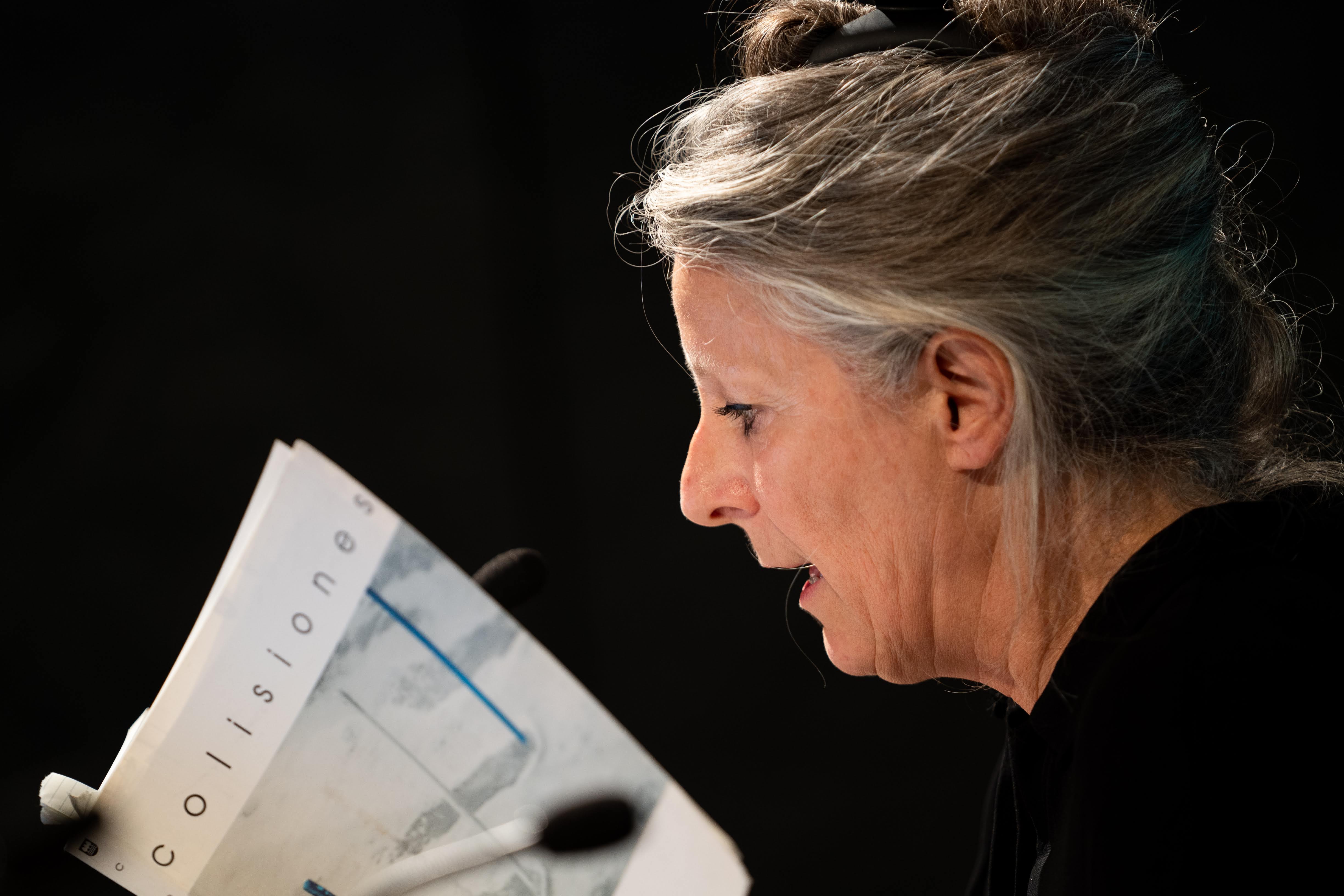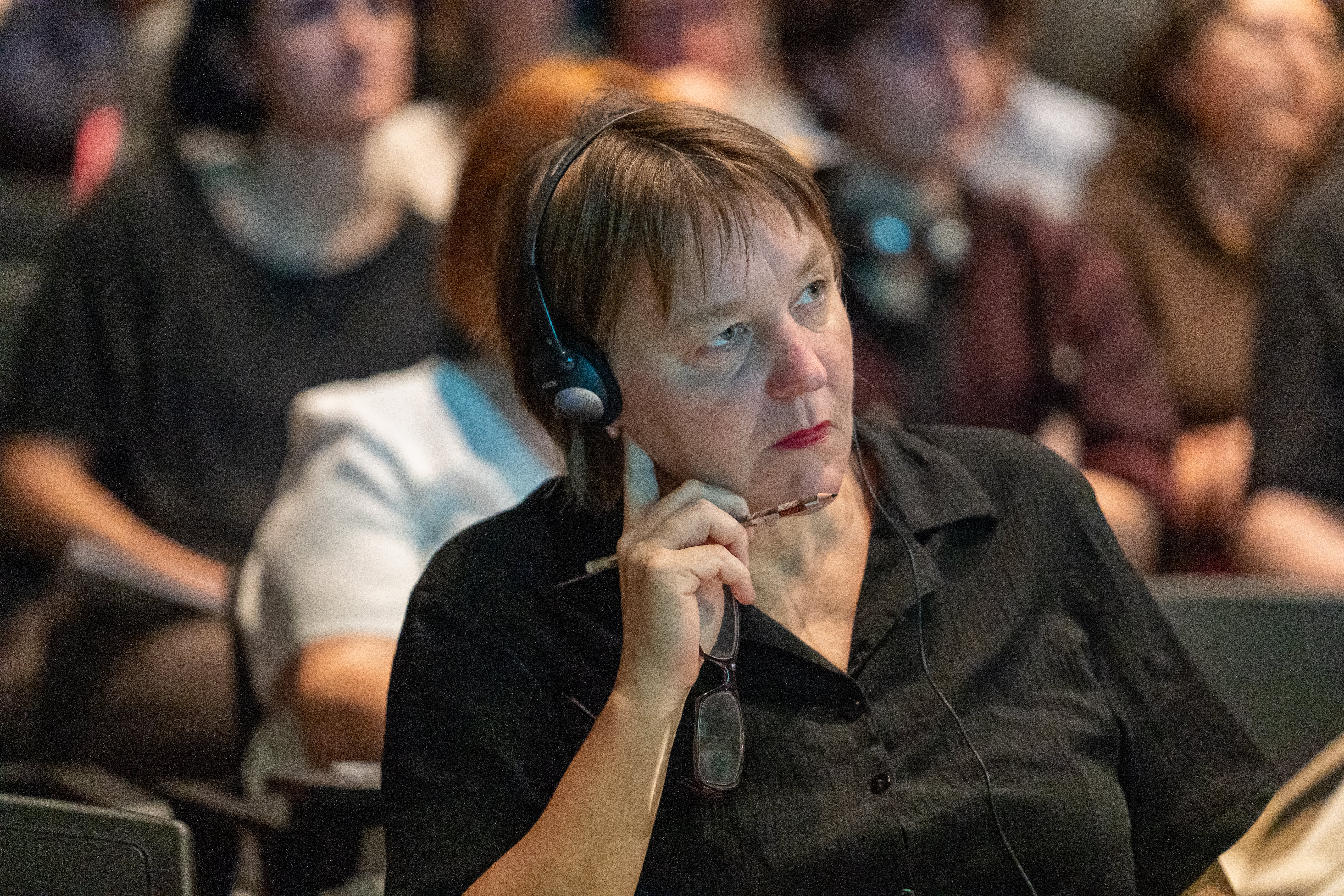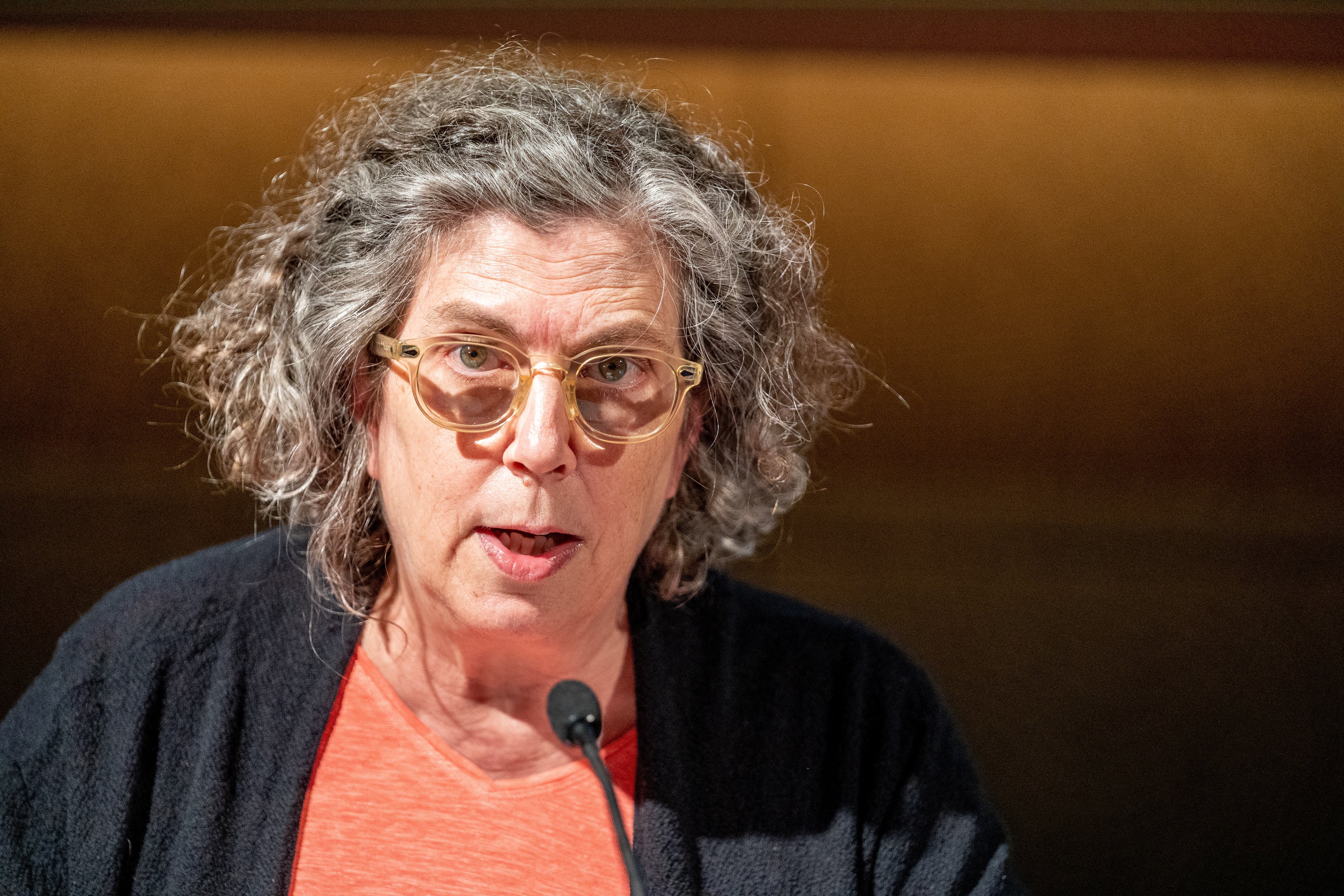The Papers of the Exhibition
III ENCOUNTER. THE PAPERS OF THE EXHIBITION (1987-1997)
by
9-10 July, 2019 at Azkuna Zentroa.
The Papers of the Exhibition (1977-2017) is a collaborative project between Bulegoa z/b and Azkuna Zentroa which aims to study certain exhibitions that took place between 1977 and 2017 and their relationship with the ideas of the ensayo, that is, the essay and the rehearsal. To that end, different international encounters will take place, each one focused on a particular decade. There have been two such encounters thus far: the first in Prologue format and the second one devoted to the decade from 1977-1987. At the 2019 event, which will take place on 9 and 10 July at Azkuna Zentroa, cases from the decade between 1987-1997 will be examined.
II Encounter (1987-1997)
The decade from 1987-1997 marked the beginning of a series of changes that would impact successive decades: the geopolitical reorganisation following the fall of the Berlin Wall in 1989 and the subsequent proclamation of the end of ideologies; the acceleration of globalisation; the AIDS crisis, etc. The art world was not impervious to these changes.
In the late eighties what was known as the contemporary art boom began. The market value of living artists’ work rose; contemporary art museums, biennales and large exhibitions proliferated all over the world. Another phenomenon that came with the boom was that museums and art institutions took on a central role in shaping a new financial model for cities as focal points for tourism.
The decade begins in the local context of the Basque Country with the inauguration of Arteleku in 1987 in San Sebastián and ends in 1997 with the opening of the Guggenheim-Bilbao in Bilbao, a museum that would herald a new model of the global city as a pole of attraction for tourism and consumer culture.
Guest speakers: Aimar Arriola, Rachel Weiss, Joaquín Vázquez Ruiz de Castroviejo, Ines Schaber, Corinne Diserens, Catherine David.
Price:
1 day: 10/8€ (Az card / students)
2 days: 18/15€ (Az card / students)
PROGRAMME*
Tuesday, 9 July, 2019
17:00: introduction. Fernando Pérez, Director of Azkuna Zentroa, and Bulegoa z/b
17:30: Aimar Arriola: Seeing (badly) from afar: Revisiting the HIV/AIDS crisis
18:30: Rachel Weiss: Regional Globalism: How the Havana Biennial Reframed the Debate
19:30: Joaquín Vázquez Ruiz de Castroviejo: El sueño imperativo and Plus Ultra. Art practices and political dealings around 1992
20:30: debate
21:00: opening reception and cocktail
Wednesday, 10 July, 2019
11:00-14:00: papers
17:00: introduction
17:30: Ines Schaber: Urban interventions (1994)
18:30: Corinne Diserens: PUENTE de… pasaje (Bilbao), a quarter of a century later
19:30: Catherine David: conversation with the curator of documenta X (1997)
20:30: debate
* Simultaneous translation into Basque, Spanish and English.
CONFERENCES
Aimar Arriola: Seeing (badly) from afar: Revisiting the HIV/AIDS crisis
This talk can be considered part of the so-called “revisiting of the AIDS crisis”, understood as the research and analysis of the historical, social and cultural conditions of the early twenty years of the ongoing HIV crisis, which in recent years is being carried out by a new generation of artists, curators and researchers. This is characterised by an emotional and chronological distance from the time in focus; a distance which is equally an advantage, defect and negotiation.
The talk begins with the year 1987, when AIDS had reached the status of a “cultural object” with the publication of a number of critical texts that spoke of the disease no longer as a medical epidemic, but as a “crisis in representation”. 1987 was also the year that AIDS was first discussed as an aesthetic issue in a special issue of October magazine which addressed “art & AIDS” and the often contradictory relation between AIDS and art.
1987 was also the year that Arteleku opened in San Sebastián. There, in the summer of 1992, sculptor Pepe Espaliú proposed his Carrying action, which is known today as one of the first artworks in Spain to have been determined by the experience of living with HIV/AIDS. This talk will consider Carrying in relation to the issue of art & AIDS, and as a chance for the speaker to adjust certain distorsions that have arisen in the act of revising recent history.
Rachel Weiss: Regional Globalism: How the Havana Biennial Reframed the Debate
More than a ‘postcolonial,’ or ‘anti-imperialist’ project, the 3rd Havana Biennial in 1989 was a challenge to the fundamental assumptions that underlay the project of ‘Contemporary Art,’ and its nascent interest in questioning its own Eurocentrism. The project’s contestations were directed toward, for example, the assumptions about modernity’s categorical departure from ‘tradition,’ which provided a foundation for assessing and confirming its value.
Additionally, and in recognition of this symposium’s structuring according to the ascending levels of the term ‘region’ which it has identified—namely, Bilbao, Basque country, Spanish state, and Europe— I will explore the bienal’s ‘globalism,’ noting the ways in which the project proposed a globalism centered in the cultural activities, definitions and meanings of the ‘margins’ (to use the language of the day).
Finally, and given that the opening week of the 3rd bienal coincided with the collapse of the Berlin Wall, I will note some of the ways in which the situation in Havana, specifically with regard to activity in visual art, was impacted by events that had been unfolding in the COMECON nations —Cuba’s allies and economic lifeline— and which heightened the tension between the bienal and the evolving political position of the country.
Joaquín Vázquez Ruiz de Castroviejo: El Sueño Imperativo and Plus Ultra, Art practices and political dealings around 1992
BNV was conceived in 1988, shortly after Spain became a member of NATO. The defeat of the referendum meant the abandonment of the last un-pacted resource for political reform. The Democratic Transition was considered over, and an economic, political, social and aesthetic order was taking hold in which resources, the gaze, action, etc. “would from then on be administered and carried out exclusively by representational bodies: political parties, syndicates and cultural institutions”.
Our company, BNV, was set up in 1988, although its work in contemporary art began in 1991 with El sueño imperativo (The Imperative Dream, 1991) and Plus Ultra (1992). These two initial projects with Mar Villaespesa came about at a moment of political and speculative optimism, when culture was being translated into a budget raise for cultural activities, and museums and art facilities opened up in unruly fashion everywhere. The interest in acknowledging the public dimension of culture would have to be interpreted as an attempt to escape from the socio-economic and symbolic structure of Francoism (joining the EEC, industrial reconversion, the movida madrileña; rise of cultural consumption, etc.), “eclipsing, without overcoming it, the spectre of the dictatorship”.
Paradoxically, in Seville, where the influence of contemporary art was hardly felt, there came about a phenomenon by which the weave of artistic activity was reconstructed, making a significant mark on the rest of the country. The exhibitions El Sueño Imperativo and Plus Ultra took place at that time. We understood that particular atmosphere, and decided to favour contexts, exceptions, where local efforts might be helped to coincide –although not to follow– with others internationally. Both exhibitions questioned the framework of their existence –the acts surrounding the year 1992– but did not challenge the context as did some other movements and campaigns which were heavily penalized. So that when we address these exhibitions, what we propose to do rather than reconstructing ideal scenarios of an uncertain past, is to discuss the exceptions, to delve into them, to give them depth and breadth and draw out the political dealings they are still bound up with.
Ines Schaber: Intervenciones urbanas/Urban Interventions
In her talk, Ines Schaber will speculate about the role of two events that took place around the same time: the workshop Intervenciones urbanas/Urban Interventions initiated by Antoni Muntadas at Arteleku in 1994 (in which Ines took part), and the building of the Guggenheim-Bilbao Museum. Two entirely distinct events that took place in the same area, around the same time. Two events, whose effects echoed in the time to come: in the thinking about the production and presentation of art; in the inventions of different forms of exhibitions; in the understanding of cultural representation; in the invention of city advertisement through art. She will ask in how far these concepts play a role for artists themselves, and influence artist’s way of production and working.
Corinne Diserens: Puente…de pasaje (Bilbao), a quarter of a century later
“Read the words «public space» literally, doggedly, dumbly. A space is «public» when: 1) its forms are public, its forms are publicly usable – they can be sat on, walked over, crawled under, run through, sprawled across, lived in; 2) its meanings are public, its meanings are publicly accessible – the place is made up of conventions, images, signs, objects, that everyone in a particular culture knows automatically, knows by heart; 3) its effect is public, its effects are publicly instrumental – the place shapes both the public that uses it and the public agency that organizes it. This third term thickens the plot. A space is public when it either maintains the public order, or changes the public order. A space is public, on the one hand, when it functions as a public prison: its conventions, images, signs, objects become facts of life – they make a system of order in which everything is in its proper place, and the citizens follow suit. A place is public, on the other hand, when it functions as a public forum: its conventions, images, signs, objects are turned upside-down, or collided one with the other, or broken into bits, so that those conventions are destabilized (they’re not solid facts anymore) and the power that grounds each convention is exposed (the space becomes an occasion for discussion, which might become an argument, which might become a revolution).»
(Extract from Public Space in a Private Time by Vito Acconci, lecture held at the seminar PUENTE…de pasaje, Bilbao, 27-28 October 1995, in the frame of the eponymous exhibition organized by Carta Blanca.)
“… is reflected in the muddy waters of the Nervión river. In that Bilbao, in search of a post-industrial identity, the exhibition PUENTE… de pasaje proposed, through a dialectic process away from cultural confinement, to stimulate creation by producing through 1995 [and 1996] the works…”
(Extract from the curatorial text of the PUENTE…de pasaje exhibition)
Catherine David: Conversation with the curator of documenta X (1997)
“You cannot define any kind of contemporary relationship without possessing a perspective. Starting with that premise, I will, of course, provide some kind of historical perspective on documenta; or at least bring to light what I call ‘memories”. This was Catherine David’s response to a question by Miren Eraso, the editor of Zehar magazine (Arteleku), on how her contribution to the event would compare to previous years. David visited Arteleku, an art centre in San Sebastian, in August 1995 – two years before the opening of documenta X. Eraso’s interview with her provides a view of the time leading up to what was to be the last documenta of the twentieth century, and the first to be directed by a woman, who in time has come to be seen as a symbol of a paradigm shift in large art exhibitions. We will be talking to David about the most noteworthy features of documenta X, and of its relationship to the cultural, social and artistic context it took place in.
PAPERS
Alejandro Alonso Díaz: Taxidermia en el Jardín del Edén: Una relectura de Les Magiciens de la Terre (Centro Pompidou y Grande Halle de la Villette de Paris), 1989
Amaia Sánchez Sampedro: De tropiezos, desapariciones e imprevisibilidad. A propósito de Caja de zapatos vacía en Aperto’93
Anita Orzes: Más allá de la exposición: cruce de caminos entre bienales (1989-1994)
Marion Cruza Le Bihan: Moi j’aime dire des textes. En torno a la propuesta expositiva D’Est, au bord de la fiction
Mirtes Marins de Oliveira: Imagining the past from the Biennial of Anthropophagy (1998), São Paulo
Sheila Portilla Prado: Dos visiones expositivas del SIDA: AIDS Timeline (Group Material, 1990) y Every Week There is Something Different (Felix González-Torres, 1991)
BIOGRAPHIES
Aimar Arriola (Markina-Xemein) is a curator, publisher and researcher. He is a doctorate candidate by Goldsmiths Department of Visual Cultures, University of London. Between 2016 and 2018 he has organised his own, public and commissioned exhibitions and programmes at MACBA, Barcelona; The Showroom, London; CentroCentro, Madrid; Bilbao Fine Arts Museum; and Tabakalera, San Sebastián, among others. Together with Nancy Garín and Linda Valdés he has undertaken the long-term project ‘An AIDS archive’. He is currently an assistant teacher on the Arts Degree of the UOC Universitat Oberta de Catalunya and member of the Work Technical Commission of the Eremuak programme from the Basque Government Cultural Department.
Rachel Weiss. Writer educator, and lapsed curator, currently Professor of Arts Administration and Policy at the School of the Art Institute of Chicago. Weiss has published extensively on contemporary art in journals, magazines and newspapers in the US, Europe, Latin America, Asia and Australia. Major publications include Making Art Global: The Third Havana Biennial (Afterall Books), To and From Utopia in the New Cuban Art (University of Minnesota Press), Por América: la obra de Juan Francisco Elso (Universidad Nacional Autónoma de México, Instituto de Investigaciones Estéticas: co-author and editor) and On Art, Artists, Latin America and Other Utopias by Luis Camnitzer (University of Texas Press: editor). Major curatorial projects include Global Conceptualism 1950s-1980s: Points of Origin (Queens Museum of Art, NYC: co-director with Luis Camnitzer and Jane Farver), Ante América (Biblioteca Luis Ángel Arango, Bogotá, and traveled in South, North and Central America: co-curator, with Gerardo Mosquera and Carolina Ponce de León), The Nearest Edge of the World: Art and Cuba Now (traveled throughout the US: co-curator with Gerardo Mosquera) and Imagining Antarctica (traveled throughout the US: funded by the National Science Foundation).
Joaquín Vázquez Ruiz de Castroviejo. During the 1970s and 1980s he served in the Communist Movement and supported the creation of the Homosexual Liberation Front of Andalusia (FLHA) and the anti-NATO movements. He is a founding member, together with Miguel Benlloch, of BNV producciones, established in 1988. From 2001 to 2015 he coordinated and produced the ‘art and thought’ programme at the International University of Andalusia. In 2006 he helped set up the Platform for Reflection on Cultural Policies (PRPC) in Seville. From BNV producciones he has organised, coordinated and produced exhibitions, projects, publications, and cinema and video programmes, including: El sueño imperativo (The Imperative Sleep); Plus Ultra; 100%; Almadraba; Vagamundo. Reflexiones sobre el exilio (Vagabond World. Reflections on Exile); El fantasma y el esqueleto (The Ghost and The Skeleton); El cine calculado (Calculated Cinema); Ir y venir de Valcárcel Medina (Coming and Going of Valcárcel Medina); …De rasgos árabes (…Arabic Features); Desacuerdo. Sobre arte, política y esfera pública en el Estado español (Disagreement. On Art, Politics and the Public Sphere in the Spanish State); Arquitectura: lenguajes fílmicos (Architecture: Film Languages); Tratado de Paz (Peace Treaty); Máquinas de vivir (Machines for Living In). He is currently working with Mar Villaespesa to put together the exhibition titled Miguel Benlloch. Cuerpo conjugado (Miguel Benlloch. Conjugated Body). BNV is a dispositif for production and cultural mediation conceived in 1988 which aimed to break into the Andalusian scene and bring about effects that activated critical thought and new ways of doing things in the creative network.
Ines Schaber is an artist and writer based in Berlin and Los Angeles. Her artistic work addresses the complexity of image-making by investigating hidden layers of historical evidences. Since 2004, she has been engaged in the working archive, a series of case studies, texts, and artistic works through which she examines and tests notions of the archive. Usually triggered by a photographic record, her often collaborative projects explore the construction of memory and how new readings are generated over time. As part of her work on cities and urban environments since the early 1990s, she participated in Antoni Muntadas’s workshop Urban Interventions at Arteleku in 1994.
Corinne Diserens was curator of Taipei Biennial 2016; between 2011 and 2016 the director of erg-école supérieure des arts in Brussels, and the jury chairwoman of the Akademie Schloss Solitude, Stuttgart. From 1989 to 1993, Diserens was curator at IVAM, Valencia; between 1996 and 2008 she directed the Musées de Marseille and the Musée des Beaux-arts de Nantes, the opening of the new Museion in Bolzano and organized international co-productions for MACBA, Barcelona, and founded Carta Blanca. Diserens has curated retrospectives of seminal artists, biennials and thematic exhibitions as well as directed numerous publications, researches, and trans-disciplinary symposiums. After studying art history at the Université Pantheon-Sorbonne Paris 1, she was a Fellow at the Independent Study Program/Whitney Museum of American Art, NYC. She holds a PhD in Aesthetics, Science and Technology of the arts, Université Paris 8.
Catherine David is deputy director of the Musée national d’art moderne (MNAM) – Centre Georges Pompidou in Paris, where she is the head of the Research and Globalisation department since 2014. From 1982 to 1990, David was curator at the MNAM and from 1990 to 1994 at the Galerie Nationale du Jeu de Paume in Paris. From 1994 to 1997, David served as artistic director for documenta X in Kassel, Germany (1997). Since 1998 she has been director of the long-term project Contemporary Arab Representations, which began at the Fundació Antoni Tàpies, Barcelona. Between 2002 and 2004, David was director of the Witte de With Center of Contemporary Art in Rotterdam, the Netherlands. David also curated the ADACH Platform for Visual Arts at the 53d Venice Arts Biennale (2011); the Hassan Sharif retrospective Experiments & Objects / 1979 – 2011 presented at Qasr Al Hosn in Abu Dhabi (2011); MARWAN: Early Works 1962 – 1972 at the Beirut Exhibition Center, Beirut (2013) and Serralves Foundation, Porto (2014); Unedited History. Iran 1960-2014 at the Musée d’art moderne de la ville de Paris and at MAXXI in Rome (2014); and Dia al-Azzawi: A Retrospective (From 1963 until Tomorrow) at Mathaf and Al Riwaq in Doha (2017). As deputy director of the MNAM, Catherine David recently curated several projects among which: Wifredo Lam (2015); Memories from the futures. Indian modernities (2017); and Latiff Mohidin: Pago Pago (1960-1969) (2018).




